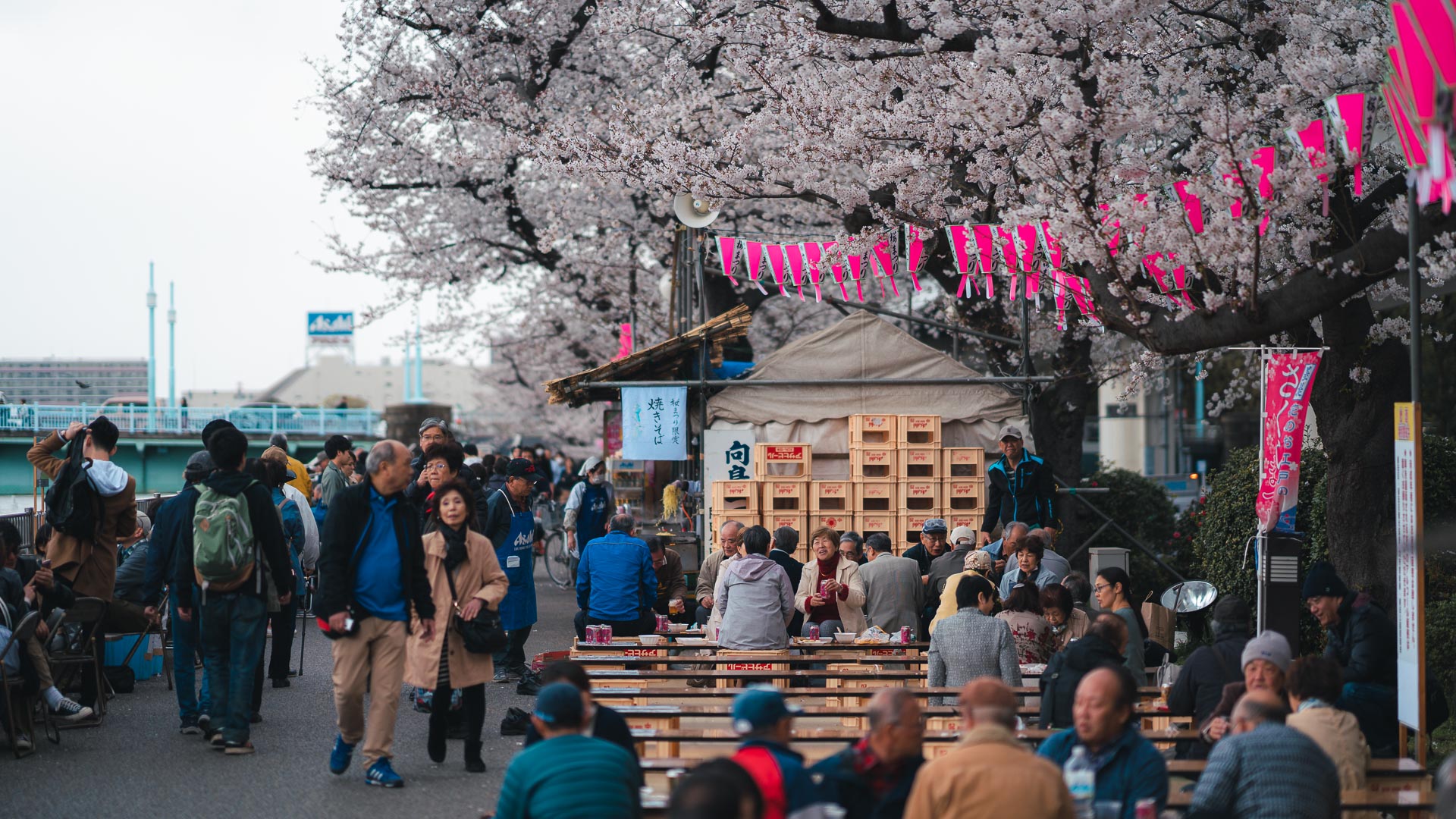When people ask me “When is the best time to visit Japan?”, I usually reply with “anytime”.
Japan is always a good idea, at any time of year. It’s truly an all-year-round destination that provides vastly varied experiences throughout its distinct 4 seasons.
Whether you’re a traveller who loves snow, or one who thrives in humidity; a traveller who wants to see beautiful nature changes, or wants to be thrown into crowds; whatever your style of travel, there’s a season and a time for that.
Of course, some periods are better than others depending on what you’re looking for, but here are my favourite times to visit Japan, and times to watch out for too.
Headed to Tokyo?
Take a look at my "Photography Guide to Tokyo", an eBook featuring 42 of the best photography locations in Tokyo + side trips, photography tips and notes on how best to capture each location, and over 180 reference images.
The best time to visit Japan
-

March - May
Cherry blossom season
Arguably Japan’s most famous season, cherry blossom (sakura) season is one of the most magical experiences you can have in Japan.
Departing just as quickly as they arrive, cherry blossom season is notoriously ephemeral and fickle. The peak of the season in every location might only last a week, starting in Kyushu first usually during the first few weeks of March, working its way up Japan into the colder regions of Hokkaido during May.
Of course, mother nature doesn’t really play to everyone’s expectations, and it’s not uncommon for blossoming to come earlier or be delayed by a few weeks either side depending on the recent conditions.
It’s still worth trying to time right though, because as ephemeral as the cherry blossoms are, they’re a flash of beauty you absolutely must experience.
Just be mindful that tourism wise, this is one of the busiest times of the year in Japan, and you’re more than likely to encounter people at every location you visit, especially if it’s popular.
-
Sept - Dec
Koyo season (Fall)
If you’re a traveller who likes ideal weather conditions, the Autumn leaves (called “Koyo”) season is the best.
From mid-late September to mid December, temperatures range between 9 to 22°C (48 to 71°F) while the rain of the typhoon and wet seasons dramatically reduce down to some of the lowest numbers of the year.
It’s pretty comfortable, in other words.
Of course, in addition to the nice weather, Japan is lit ablaze with yellow, orange, and red hues of the Koyo season, with peak colours mid-late November to early December (in Tokyo).
Because of that, it’s also another busy time of the year, so if you don’t like crowds, be wary. However unlike cherry blossom season, Koyo can be enjoyed in many more locations, so if you try hard enough you’re sure to find a peaceful, colourful spot you can enjoy in a little more solitude.
-

End of Dec - Early Jan
New year
The coming of the new year is alive with the buzz of a fresh start in Japan.
New year is one of Japan’s peak seasons, with people taking time off work and companies shutting down for a few days.
Many people partake in various rituals and activities to bring in the new year, and it's a very common sight for many nationals to visit temples and pray for good luck for the coming year.
That means there's lot of activity, and a motivated chaos at the favourite shrines.
For me, it’s a chaos that makes it one of the best times to visit Japan, because the vibes are great, I enjoy the chaos of crowds, and it’s just an energetic time to be around. Plus, who doesn't love starting the new year in the best way they can?
-

Dec - March
Snow season
One of the other best times to visit Japan is during the snow season.
Japan has two fantastic hot spots for cold-weather adventurers, the Japanese alps in the centre of Japan, and Hokkaido.
The mountains come alive with snow-activity, providing some of the best pow in the world for you to ski or board on.
And of course, for the sightseers, many parts of Japan become covered with bright, thick snow, giving a completely different visual experience to the Japan you usually see.
As a photographer who has seen hundreds if not thousands of temples and shrines, adding a layer of gently placed, freshly fallen snow turns the atmosphere of any scene up to 11. It’s amazing.
-
Times to watch out for
-

End of April - Early May
Golden week
Golden week is a period where there are 5 national holidays that take place over the week, starting from Showa day on the 29th of April and ending with Children’s day on May 6th.
With the craze of cherry blossom season behind most of the country, Japanese nationals - who love to travel across the country, mind you - take a week-long break.
With the entire country being freed up from their jobs and most companies shutting down for the week, you’ll find many people making the most of their free time out and about.
This is perhaps the worst time of year to catch a train to busy wards and districts, especially in a city like Tokyo. There’s a lot of people about.
Of course, you could be like me and absolutely love the hilarity and chaos of being thrown into a crowd, but I think people like us are far and few in between.
-

June - August
Summer
Perhaps a little controversial to put in a “time to watch out for” section, but Summer in Japan is hot and really humid and I feel strongly enough about this having endured a few of them.
Summer days in cities like Tokyo and Kyoto can easily reach 30°C with humidity levels between 80-90%. 30°C isn’t so bad in itself, but it’s the humidity that really starts to drain you.
Be wary of filling your days with activities, because the heat can have a very real effect on your stamina during the day.
For me personally, I tend to avoid Japan summer if I can (and even into September, too) because I’m not great with humidity.
Also during June, to go along with the heat, Japan sees the highest amount of rain in the year, so be wary of that too.
Otherwise, there are many festivals and lots of activity about in Summer, so if you don’t mind the heat, it’s still a great time to visit - just make sure to stay hydrated.
So, when’s the trip?
We all have different tastes and preferences when we travel. But now that you’ve figured out the best time to visit Japan, when’s best for you?



